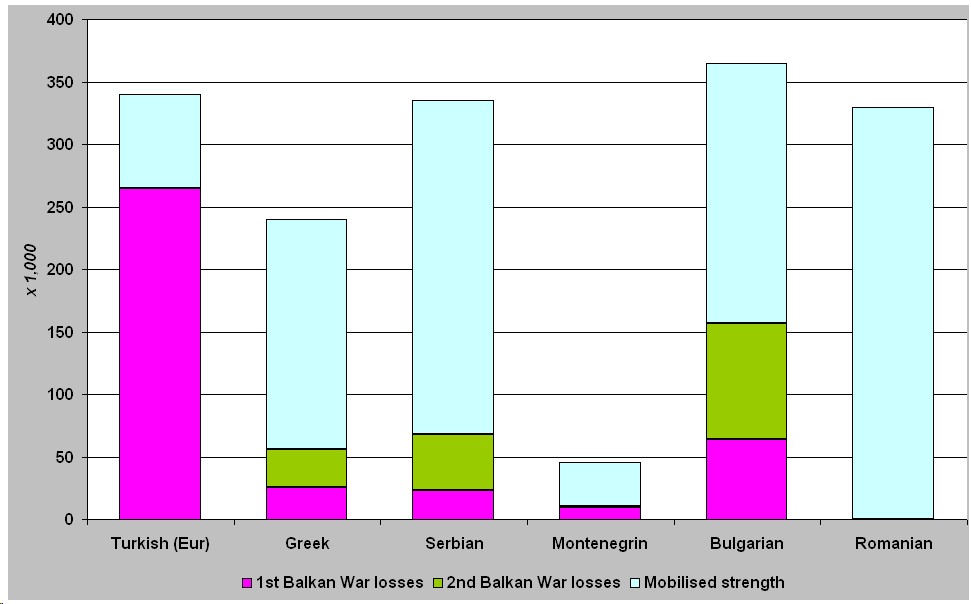Armies of the Balkan Wars follows the standard MAA format: it starts out with a short introduction and chronology of the two wars. I hadn't realised the wars were so close after each other and that the second war had been so bloody, despite lasting only a month. Another factor I'd not taken into account was that the war against Italy (in Libya and the Aegean) was only ended in October 1912.
Reading other stuff about the road towards WWI makes me also see how much of the politics is left out (eg the Russian involvement in creating the anti-Ottoman coalition). I understand why MAA leaves it out, but the complicated politics of the region deserve more. Especially as the book's subtitle claims this was the 'priming charge for the Great War' but nevere really explains how.
Then follows the major section on all the belligerents. Most armies used an age-based system of conscription, allowing them to raise considerable reserves. Also there was a small additional reservoir of irregulars in the Ottoman territories and foreign volunteers that fought on the side of the ant-Ottoman coalition. However, that also meant that the quality of the majority of troops was low. Especially the Turkish army in Macedonia was hampered by being composed mostly of local reserve troops.
The most remarkable effort was made by Montenegro, a microstate of only 250,000 inhabitants that raised an army of 40,000 by conscription all men between ages 17 and 62. The fact that it lost over 10,000 men during the war was not only a high price to pay for the army, but for the country as well.
 |
| The strength and losses of the belligerent states. No records of Romanian or Turkish losses in the 2nd Balkan War |
The graph shows that losses in the two war, although short, were heavy. This had to do with the backward logistics and medical arrangements, amplified by the stationary nature of the war (sieges). Of the 265,000 losses in the Turkish army in the First Balkan War, 75,000 resulted from disease and 115,000 were taken prisoner. I assume these numbers include deserters as well.
From the section on weaponry and other equipment we can conclude that most armies were in short supply to fully equip their war time armies. Although the anti-Ottoman coalition managed to plug most of these gaps with remaindered equipment of more advanced armies, the result was an even greater lack of standardisation and more logistical problems. That leads to the same conclusion as the small section on uniforms, which is that it all wasn't very uniform.
All in all the book is not special. The Men At Arms formula remains very general and I tend to prefer the campaign series for detail. I was impressed by the photographs and illustrations though.

No comments:
Post a Comment
I appreciate comments. Let me know what you think!